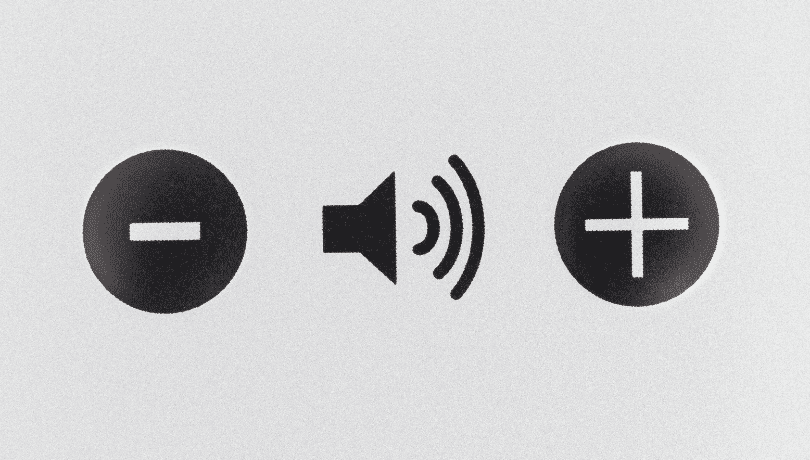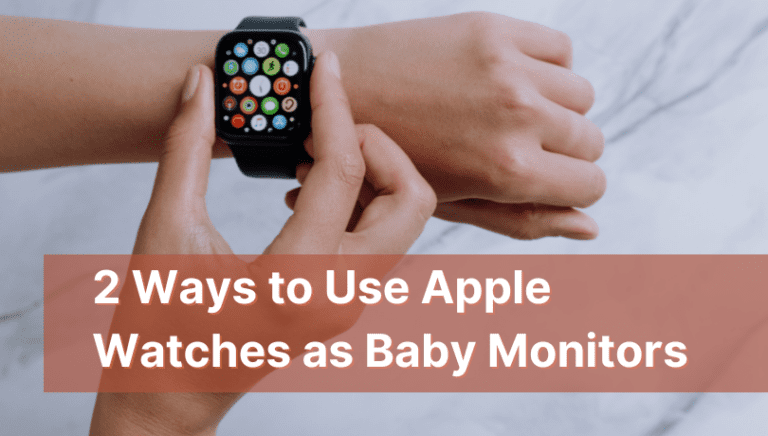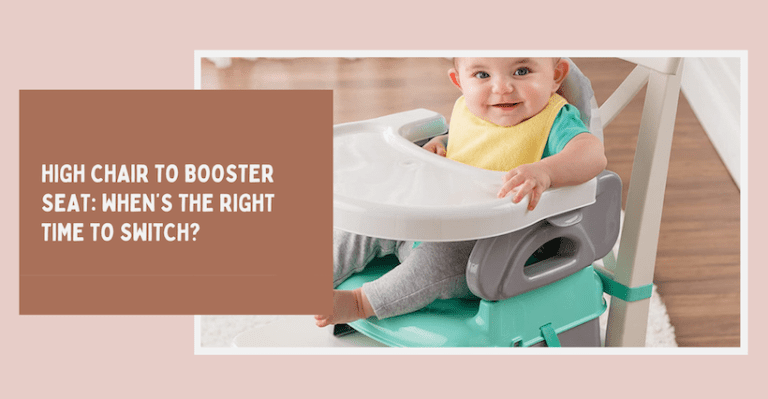What is VOX on a Baby Monitor: A Complete Guide
When I began looking at baby monitors for my little Theo and Sawyer, I kept seeing this word called VOX on a lot of the products and I didn’t understand it. But later, I wanted to know what it actually meant and found that it’s a simple and useful feature to have in your baby monitor!
Baby monitors have definitely gotten more advanced from when I first used them. And VOX is a game-changer for sure. This feature is available on most video baby monitors or smart ones.
So, please bear with me as I explain what is VOX on a baby monitor, how it works, the sensitivity settings you should know about, and how it’s different from other types.
Table of Contents

What Happens Without VOX?
So, let’s dial it back a little.
We know that baby monitors have a child and parent unit. You place the child unit in your child’s room and you use the parent unit to listen to sounds, have eyes on your baby, or both.
- This means you hear almost every sound coming from the baby’s room. It doesn’t matter if it’s scrambled noise or your baby’s coos, you’ll hear it all.
- Sometimes, your baby’s soft calls may even get lost over all the noise. Has that ever happened to you? It has for me.

It used to drive me insane to listen to the background noises from the baby monitor the entire night! This is what happens when a baby monitor does not have VOX. This type of monitoring is called continuous monitoring. It
- continually transmits all sounds,
- does not differentiate between interference/noise and other important sounds, and
- does not alert you on time about movements or relevant noises.
Thankfully, today’s most reliable baby monitors have VOX in-built, but it still helps to check if your product has the feature. I’ve also written a short blog on how baby monitors work if you’re interested in learning more.
What is VOX on a Baby Monitor?
Now, let’s get to VOX. VOX stands for Voice Activated Exchange. It’s also called Voice Activated Transmission.
A VOX baby monitor transmits real-time sounds and provides video, but here’s where it gets interesting:
- The device can go into standby mode when there are no sounds (perfect for sleeping at night),
- It can distinguish between noises better using different sensitivity levels, and
- It can provide alerts to the parent unit about unusual noises that are above the sensitivity levels you set
Your VOX video baby monitor goes into sleep mode at night and turns off the screen of the parent unit. But the microphone is always active!

So, only if your monitor senses any significant sound from your baby’s room do audio and video transmissions start showing up again.
VOX Vs. Traditional Baby Monitors
Compared to conventional monitors, VOX baby monitors deliver additional benefits.
| VOX Baby Monitors | Baby Monitors without VOX |
|---|---|
| It gives you more freedom to do chores or work while you keep an eye on your baby from another room. | You may need to keep checking your baby monitor for even the most innocent of sounds. |
| Likewise, it alerts me when the child unit detects any movement or sounds. And it keeps away unwanted noise. | It’s difficult to distinguish the noise from your baby’s sounds, which can make it difficult to hear your baby crying. |
| It has an eco-mode with low EMF emissions, and it can conserve battery for longer. | EMF emissions are higher, and the battery needs to be charged more frequently. |
VOX Baby Monitors: Features and Benefits
1. Real-Time Monitoring
Managing multiple children like I do is not an easy task. That’s why real-time monitoring is a life-saver. It helps me detect my youngest munchkin’s modest sounds even when my house is vibrantly alive with sounds from my other older children.
As soon as it senses your newborn cry, giggle, or coo, your parent unit gets an alert immediately. Additionally, its sleep mode reduces white noise that can disturb parents or make them anxious.
2. Sensitivity Adjustment
I just love this feature.
The VOX mode enables you to adjust voice sensitivity. I’m using a Babysense monitor with three sensitivity levels: high, medium, and low. Some models allow you to fine-tune sensitivity even more!

Brands like V-tech have five sensitivity levels for parents looking for in-depth personalization for their tots’ safety. Here’s a small overview of the five sensitivity levels in V-tech so you can understand why it’s important to have this feature:
| VOX Sensitivity Levels | Description |
|---|---|
| Highest Sensitivity | Putting VOX mode on the highest sensitivity means your parent device detects your baby’s softest sounds AND all the background noise coming from the room. |
| High Sensitivity | This level eliminates the background noise, but you can still hear the softest sounds of your little one. |
| Medium Sensitivity | This mode is handy when you’ve got a toddler who is learning to talk and speaks in loud babbles. Just know that it cuts off almost silent and soft voices. |
| Low Sensitivity | A low-sensitivity mode is great for when your kid cries loudly and makes sudden, sharp noises. |
| Lowest Sensitivity | The VOX sensitivity is set to lowest when a child’s sounds can be heard easily as if you’re next to the room. |
3. Battery Friendly
When my baby is sleeping, my VOX baby monitor goes into sleep mode, dimming the light from the parent unit. This can help keep the battery running for longer, saving on power as well.
The parent unit automatically switches off when VOX mode detects no sound around the baby unit for 30 seconds. When my baby wakes up and makes a sound, the parent unit’s light turns on again.
Kelleigh’s Note:
Standby mode doesn’t mean your video screen or the baby monitor shuts down. Remember: the screen and microphone are still operational.
4. Lowers EMF Radiation
When a baby monitor continuously streams audio and video signals from the child to the parent unit, it can eventually create an electromagnetic field (EMF) that can produce harmful radiation.
This is also another reason why experts suggest keeping monitors 3 feet away from babies!
But, thanks to the incredible VOX feature, the transmission of signals is restricted when the baby monitor is in sleep mode. Thus, reducing EMF waves.
How Does VOX Work In Baby Monitors?
Like Siri or Alexa, VOX on baby monitors recognizes the sound coming from your baby’s room. And the level of sound it detects depends on the sensitivity settings you place on it.

These sensitivity settings are super important if you need to understand how VOX works. So, take a peek at the Sensitivity Adjustment section above before you move on.
There are four approaches by which VOX works in baby monitors.
| Approaches | Explanation |
|---|---|
| 1. Sound Detection | When the microphone identifies the sound in the child’s unit based on sensitivity level, it automatically transmits the audio to the parent unit. |
| 2. Movement Detection | When VOX mode is configured with video sensors, it catches your infant’s movement and quickly sends out an audio and visual feed to the parent unit. |
| 3. Activation & Transmission | In this approach, VOX mode switches on the parent unit if the movement or sound of a newborn is beyond the preset threshold. |
| 4. Standby Mode | Here, the child and parent units remain in sleep mode until the microphone discovers any voice or motion in your baby’s room. This mode saves battery and restricts the transmission of EMF waves. |
How To Set Up VOX On Video Baby Monitors
When you purchase a baby monitor, you usually receive a manual for setup. If you’ve misplaced your manual, don’t worry. Most brands also have instructions on their websites. Just search for your product’s manual on Google, and I guarantee that you’ll find it.
And usually, setting up VOX is not difficult. Here is a general guide to set up or activate VOX in just a few seconds (this may differ for different brands):
- Press the MENU button on the parent unit.
- Go to the VOX section under settings using the up and down arrows.
- Now select the SENSITIVITY level using the volume buttons to meet your needs. Press left to lower the sensitivity level, or press right to increase the level.
- The device asks you for confirmation by pressing the menu or central button.
- Once confirmed, turn on the sound detection alert under settings. You’ll usually see a sound-on icon on the status bar once you’ve turned it on.
Note: Every model’s VOX settings may differ slightly. So, it’s always better to read the manual before you proceed.
A Common Issue with Baby Monitors
A major problem many parents face when using baby monitors, especially VOX-based monitors, is the right placement. Placing them in the wrong area can trigger interference and increase noise based on sensitivity adjustment. So, it’s always important to first put your baby monitor in the right place.
- If the monitor is too close to your baby, it may alarm you with frequent notifications, even if you set it to a lower sensitivity.
- So, please keep it at least 3 feet away from your child; ensure the angle positioning covers a wide area and can offer close views of your baby.
- Also, if you use a white sound machine to listen to your baby’s voice better, you can set the sensitivity level to an even lower setting.
My Final Views on VOX Mode
VOX mode amplifies the baby monitor’s real-time capabilities by alerting for sounds and movements better. And I believe the evolving technology may improve its customization settings for the safety of newborns.
Their sensitivity adjustment settings, battery life, and real-time monitoring features are extremely helpful for parents like us. So, I genuinely hope you experience more peaceful parenting days with VOX baby monitors.
Additional Resources
If you are looking for VOX baby monitors that offer superior image quality, you can see if these suit you:






